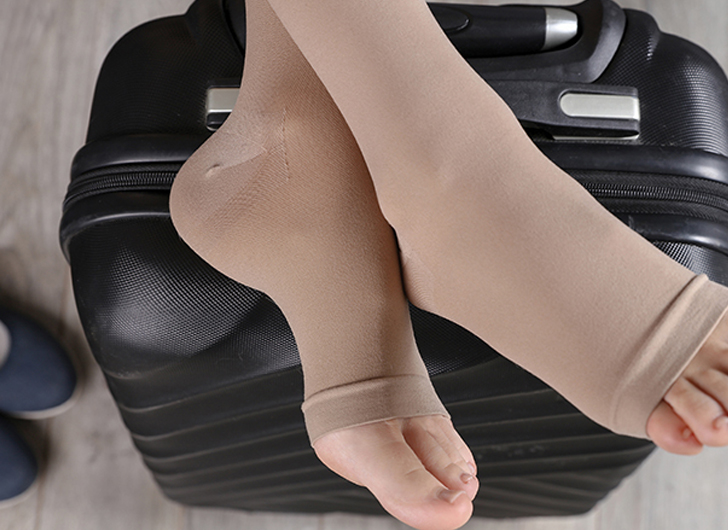TRAVEL
10 Tips to Prevent Deep Vein Thrombosis on Long Flights
Published
9 months agoon
 Source: iStock via Getty Images
Source: iStock via Getty Images
Long flights can be exciting, offering opportunities for adventure and exploration to far-flung locations aaround the globe. However, they also come with certain health risks, one of which is Deep Vein Thrombosis (DVT). DVT is a condition where blood clots form in deep veins, typically in the legs, and can be exacerbated by prolonged periods of immobility during extended flights. To ensure your journey remains safe and comfortable, here are ten essential tips to prevent DVT during long flights.
Stay Hydrated: Dehydration can increase the risk of blood clot formation. Drink plenty of water throughout the flight to keep your blood flowing smoothly. Avoid excessive caffeine or alcohol, as they can contribute to dehydration.
Move Your Legs Regularly: Sitting in one position for an extended period can slow down blood circulation. Make an effort to flex and extend your ankles, wiggle your toes, and stand up to walk around the cabin every 1-2 hours. This simple action can significantly reduce the risk of DVT.
Wear Compression Stockings: Compression stockings provide pressure to your legs, helping to improve blood flow and prevent clot formation. Consult your doctor to find the right compression level and size for your specific needs.
Perform In-Seat Exercises: While seated, perform simple leg exercises to keep your blood circulating. Ankle circles, foot pumps, and knee lifts can help maintain good circulation and prevent stiffness.
Choose Aisle Seats: Opt for an aisle seat, if possible, to make it easier to get up and move around without disturbing your fellow passengers. This will allow you to perform in-seat exercises and walk down the aisle more frequently.
Avoid Crossing Your Legs: Crossing your legs can restrict blood flow. Keep your feet flat on the floor to encourage better circulation.
Elevate Your Legs: If you can, elevate your legs for short periods during the flight. This can help reduce the risk of blood pooling in your lower extremities.
Wear Loose and Comfortable Clothing: Tight clothing can constrict blood flow, so choose loose, comfortable clothing for your flight. Avoid belts or clothing that may bind your waist or legs.
Maintain a Healthy Diet: Eating well before your flight can promote overall health and reduce your risk of DVT. Opt for foods rich in fiber, fruits, and vegetables, and try to avoid heavy, high-sodium meals.
Consult Your Doctor: If you have a history of DVT, are pregnant, or have other risk factors, it’s crucial to consult your doctor before traveling. They can provide personalized advice and may even prescribe blood-thinning medication for your flight.
More From Bon Voyaged
-


U.S. State Department Warns Travelers of Kidnapping Risk in Mexico
-


Travel+Leisure Announce Top 15 Islands in the World
-


Scorpion Stings United Airlines Passenger
-


Margaritaville Hotels and Resorts Celebrates Grand Opening in Belize
-


American Airlines Flight Attendants Vote Overwhelmingly To Authorize Strike
-


Royal Caribbean Plans to Extend Perfect Day at CocoCay
-


Margaritaville at Sea Unveils New Unlimited Cruise Pass
-


We Now Have a New National Park – and it’s…
-


Travel Advisory Issued for Parts of Peru
-


Celebrity Trainer Reveals Ariana Grande’s Tips for Staying Fit While…
-


Traveling to New York? Better Get a COVID Test First
-


This is the Most Haunted Road in America

